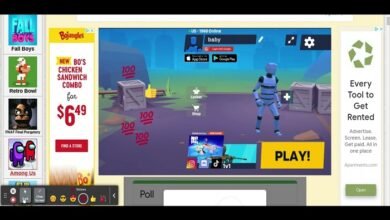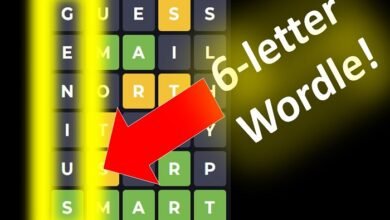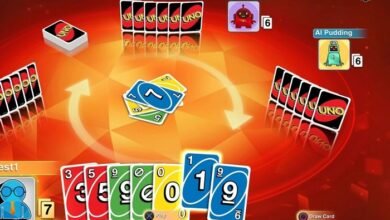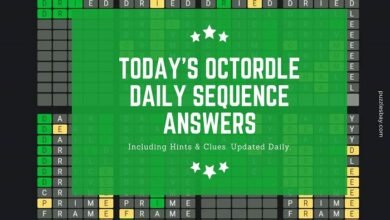Wordle ES: The Ultimate Guide to Playing and Mastering the Spanish Version of Wordle

Wordle ES is the Spanish version of the globally popular word puzzle game Wordle, where players have six chances to guess a five-letter word. Wordle became a viral phenomenon, and its Spanish counterpart, Wordle ES, quickly followed suit, attracting language learners, native speakers, and puzzle enthusiasts alike. The game is simple yet addictive, challenging players’ vocabulary and problem-solving skills in a fun and engaging way. If you’re looking to dive into Wordle ES and improve your Spanish vocabulary, this guide will walk you through everything you need to know.
Wordle ES brings the joy of word games into the Spanish-speaking world, helping language learners and native speakers practice their vocabulary while having fun. From understanding the rules to developing strategies, Wordle ES is an excellent way to immerse yourself in the Spanish language while playing a game that stimulates your brain.
How to Play Wordle ES: The Basic Rules
In Wordle ES, the goal is to guess a five-letter Spanish word within six attempts. Like its English version, the game provides feedback after each guess. If a letter is in the correct position, it turns green; if the letter exists in the word but is in the wrong position, it turns yellow; if the letter is not part of the word at all, it turns gray. This color-coded feedback helps guide players toward the correct word.
Wordle ES follows the same basic structure as the original Wordle, but with the added challenge of playing in Spanish. It’s a perfect tool for those learning Spanish or who want to expand their Spanish vocabulary. Each guess offers valuable hints, and players must use their knowledge of Spanish grammar and vocabulary to make educated guesses.
Wordle ES vs. Original Wordle: Key Differences
While the mechanics of Wordle ES remain largely the same as the English Wordle, there are key differences that make Wordle ES a unique challenge. One of the most significant differences is the vocabulary pool. Wordle ES uses common Spanish words, which might be tricky for non-native speakers or those new to the language.
Unlike the original Wordle, Wordle ES introduces Spanish-specific elements like accents and unique Spanish letters such as “ñ.” These differences can make the game more challenging for English-speaking players but also offer an exciting opportunity to enhance their Spanish language skills. Understanding the nuances of the Spanish language is crucial when tackling Wordle ES, as word construction, common letter pairings, and verb forms in Spanish differ from English.
Tips for Improving Your Wordle ES Game
To master Wordle ES, it’s essential to develop strategies that improve your guessing game. Start by familiarizing yourself with common five-letter Spanish words. Many Spanish words share similar letter patterns, and recognizing these can help you narrow down your guesses faster. Here are a few tips for improving your Wordle ES game:
- Start with Common Vowels: Spanish words often contain a high frequency of vowels, especially “a,” “e,” and “o.” Start with guesses that include these vowels to maximize your chances of uncovering letters quickly.
- Watch for Conjugations: In Spanish, verbs are often conjugated into five-letter forms. Keeping this in mind can help when you’re stuck on a word.
- Accented Letters Matter: Remember that accented letters, like “á,” count as distinct from their unaccented counterparts. Be sure to consider these when guessing.
- Use Plural Forms: Spanish has many plural forms that end in “s,” which might help narrow down your guesses if you’re unsure about singular forms.
- Analyze Previous Words: If you play Wordle ES regularly, take note of previous solutions. Often, common patterns or themes emerge that can help with future guesses.
These strategies can help you make more informed guesses and improve your chances of solving the word in fewer attempts.
Why Wordle ES is Great for Spanish Learners
Wordle ES is not only a fun game but also an excellent learning tool for those trying to improve their Spanish skills. Playing Wordle ES regularly can significantly enhance your vocabulary and understanding of word structures in Spanish. By focusing on word patterns, conjugations, and accent marks, players get exposed to everyday vocabulary, which can improve both written and spoken language proficiency.
Wordle ES is a fantastic way for Spanish learners to test their knowledge in a low-pressure environment. Since it requires only a few minutes to play each day, it’s an easy addition to your language learning routine. Furthermore, because Wordle ES encourages critical thinking and problem-solving, it helps reinforce language retention by requiring active engagement with the words. It’s a perfect blend of fun and education.
The Cultural Impact of Wordle ES
Wordle ES has had a notable cultural impact in the Spanish-speaking world. As with the original Wordle, social media has played a huge role in its rise to popularity. Players often share their results on platforms like Twitter, Facebook, and Instagram, creating a sense of community among Spanish speakers and learners alike. This community aspect has further fueled the game’s popularity, as people from different countries compare their results and discuss strategies.
The success of Wordle ES highlights the importance of language games in connecting people across borders. Spanish is spoken in many different countries, and Wordle ES has become a daily ritual for many individuals around the globe. It’s fascinating to see how a simple word puzzle can transcend cultural barriers and unite people in a shared experience. Wordle ES is a reminder of the power of language and games to bring people together, fostering connections across diverse backgrounds.
The Role of Technology in Wordle ES’s Success
Technology has played a pivotal role in the success of Wordle ES. Like its English counterpart, Wordle ES is an online game that’s easily accessible through a web browser or mobile device. Its simplicity and convenience have contributed to its viral success. Players don’t need to download an app or pay for access; they can simply visit the website and start playing.
The design of Wordle ES is also a testament to the power of minimalism in game development. Its straightforward interface, combined with the challenge of guessing a word in six tries, is enough to keep players hooked without overwhelming them with complex features. In an age where many games are packed with extra elements, Wordle ES stands out for its simplicity and focus on the pure joy of language.
Wordle ES and Its Future
With the success of Wordle ES, many wonder what the future holds for the game. While its basic structure has remained unchanged, there is potential for new features or modes to be added in the future. For example, incorporating multiplayer modes where players compete against each other in real time could add a new layer of excitement. Additionally, there could be daily challenges or special themed Wordle puzzles centered around holidays or cultural events in Spanish-speaking countries.
The developers of Wordle ES may also explore integrating it with language learning apps to create a more immersive educational experience. Given the game’s popularity among language learners, this could be a natural progression. Regardless of the direction Wordle ES takes, it’s clear that the game has made a lasting impact on the word game genre, especially for Spanish speakers and learners.
Conclusioz
Wordle ES offers a unique and enjoyable way to challenge your brain, improve your Spanish language skills, and engage with a global community of players. Whether you’re a native speaker or learning Spanish as a second language, Wordle ES is a fun and interactive way to test your vocabulary and problem-solving abilities. With its simple rules and daily puzzles, Wordle ES is easy to incorporate into your routine, offering both entertainment and education.
The success of Wordle ES proves that language learning doesn’t have to be boring or tedious. By turning language practice into a game, Wordle ES motivates players to think critically, expand their vocabulary, and engage with the Spanish language in a meaningful way. If you haven’t tried it yet, now’s the perfect time to dive into Wordle ES and see just how fun learning Spanish can be!
FAQs
1. What is Wordle ES?
Wordle ES is the Spanish-language version of the popular word puzzle game Wordle, where players guess a five-letter word in six attempts.
2. How does Wordle ES differ from the original Wordle?
The main difference is the use of Spanish vocabulary, which includes accents, unique letters like “ñ,” and different word structures.
3. Can Wordle ES help improve my Spanish language skills?
Yes, Wordle ES is an excellent tool for expanding your Spanish vocabulary, recognizing word patterns, and improving spelling in Spanish.
4. Are there any strategies for winning Wordle ES?
Some strategies include starting with common vowels, considering conjugated verbs, and paying attention to accented letters and plural forms.
5. Is Wordle ES free to play?
Yes, Wordle ES is free and accessible online via web browsers, making it easy to play from any device without downloading an app.





